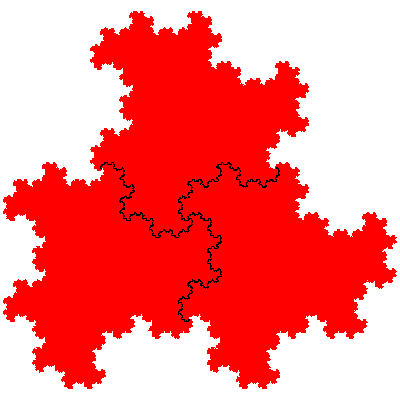
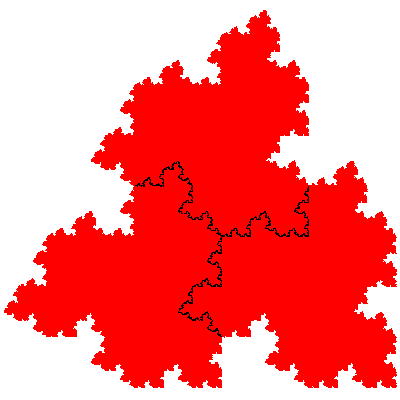
The name fudgeflake has been applied to the directly self-similar cyclic trihextal. I extend the name to include the corresponding inversely self-similar tile, distinguishing them as the cis-fudgeflake and the trans-fudgeflake.


The elements of the above figures can be considered as centred on 3 points of a hexagonal grid (e.g. at the Eisenstein integers e00, e10 and e11). I extend the concept of a fudgeflake to include additional c3-symmetric order 3n2 tiles formed from elements forming a d3-symmetric hexagonal array with n and n+1 elements alternatively on each side, particularising these as the nth order cis- and trans-fudgeflakes. These can equivalently by conceived of as being formed by adding elements (and reducing the size of each element to compensate) at the points on the hexagonal grid forming a ring around the points involved in the previous order tiles.
I conjecture that these two series of tiles have a countably infinite number of members, as there is no obvious reason why the construction should stop working at any point.
These fractals share the following properties
As n tends to infinity the attractor approaches a regular hexagon.
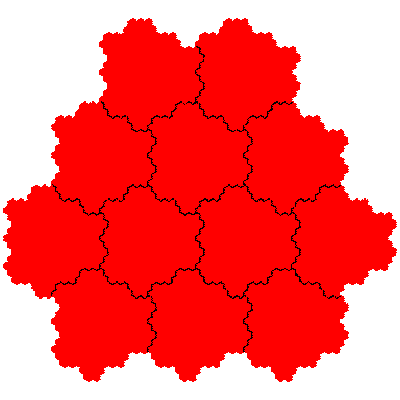
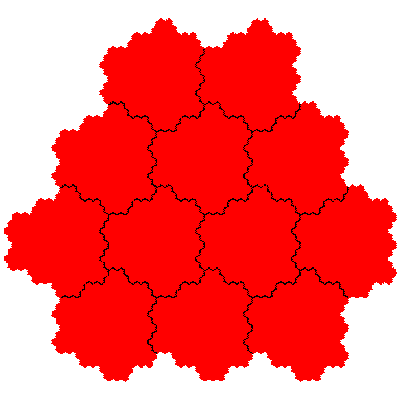
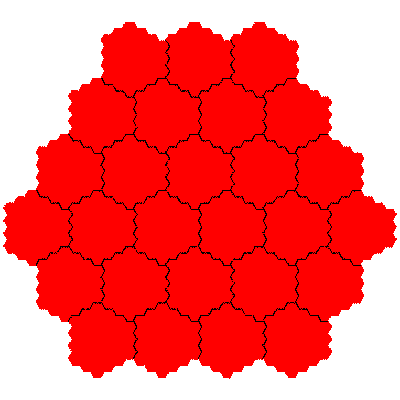
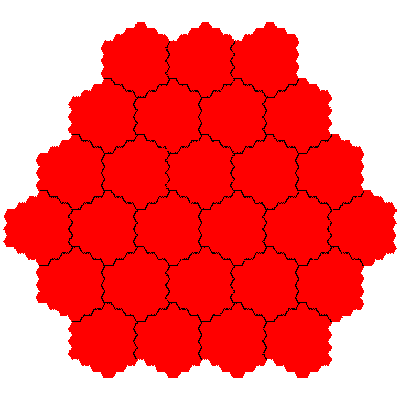
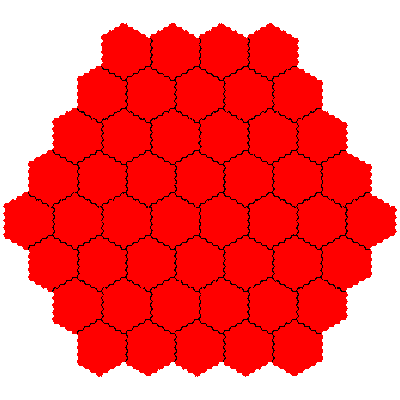
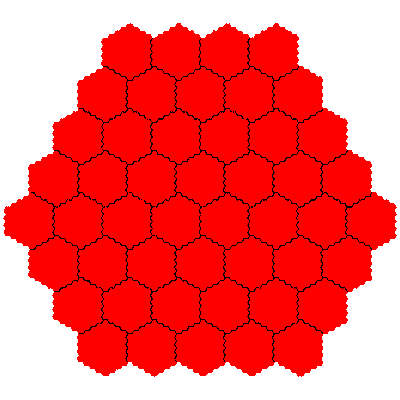
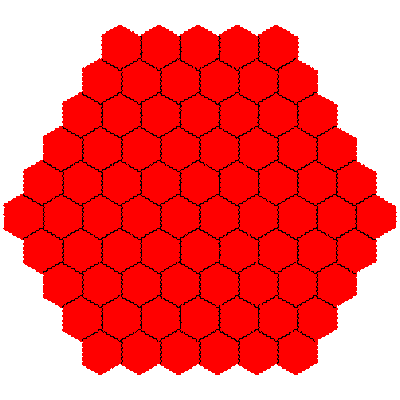
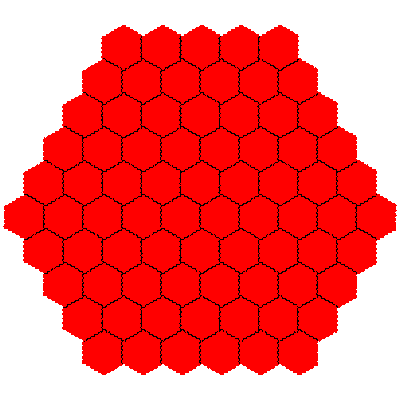
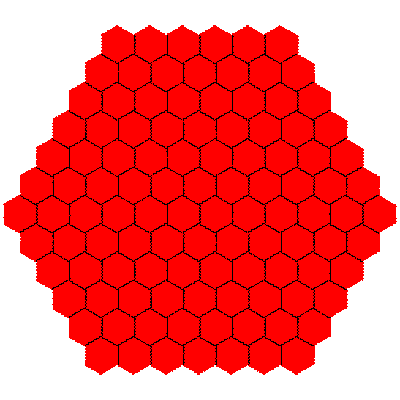
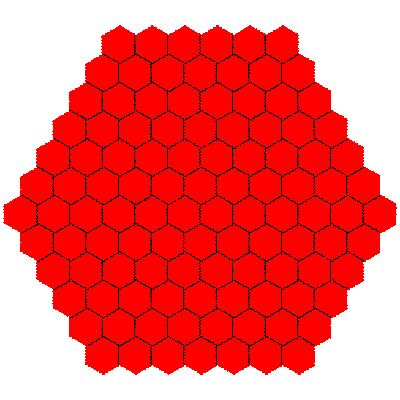
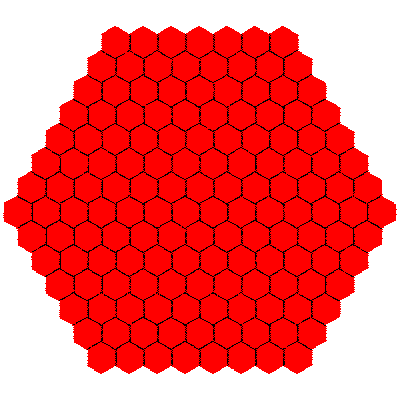
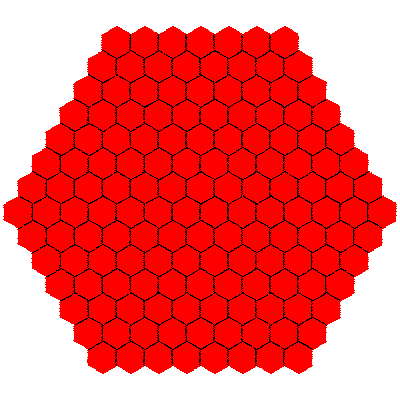
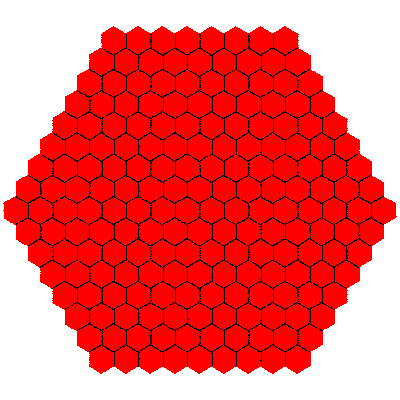
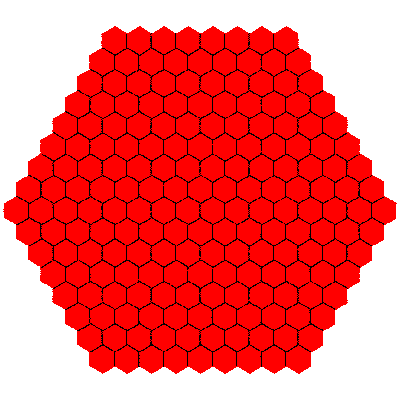
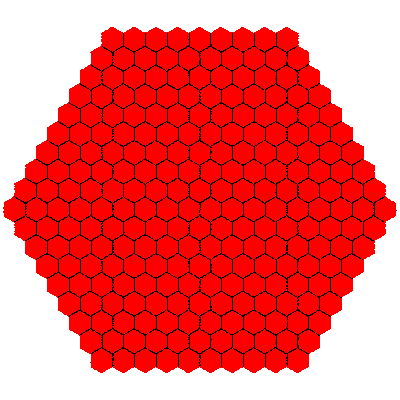
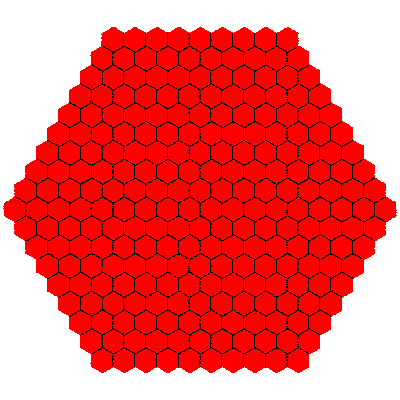
These obviously tile the plane with one copy in the unit cell. With the above orientations and placement of elements on a unit grid the tiling vectors are en0 + enn and en0 - e0n.
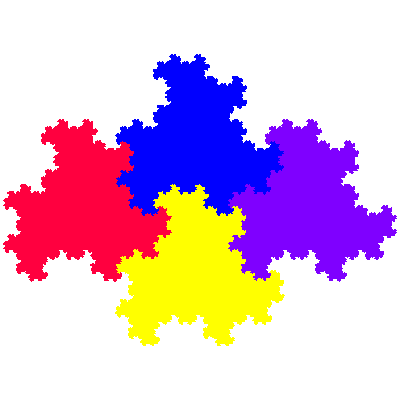
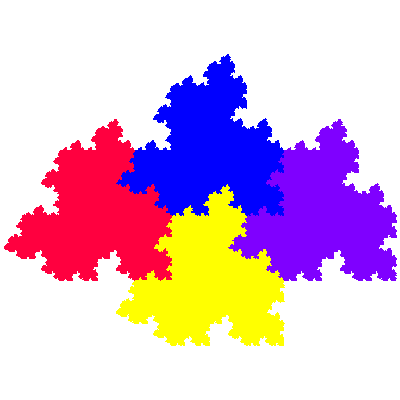
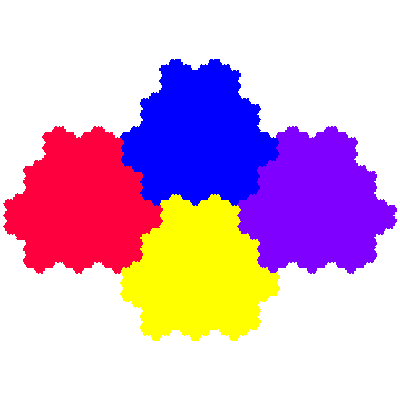
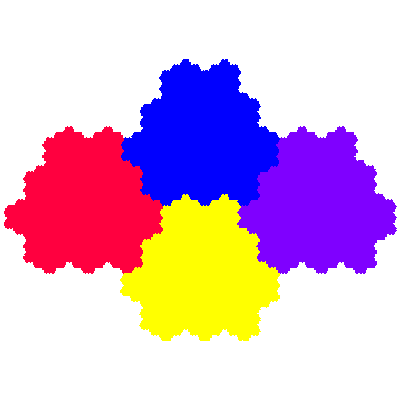
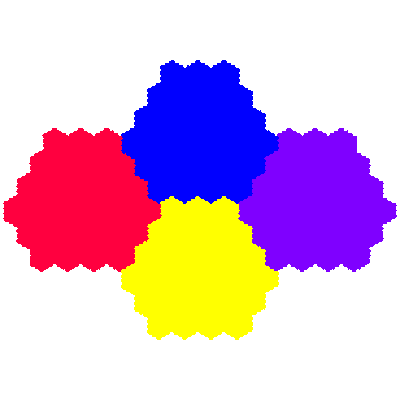
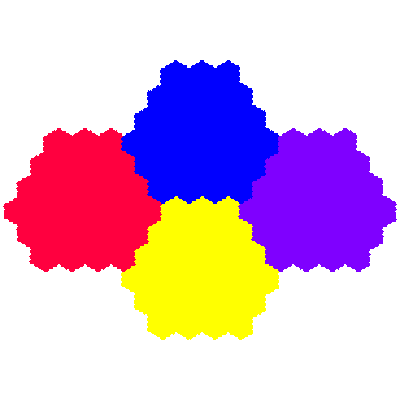
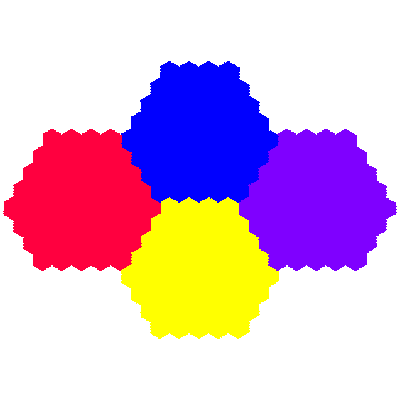
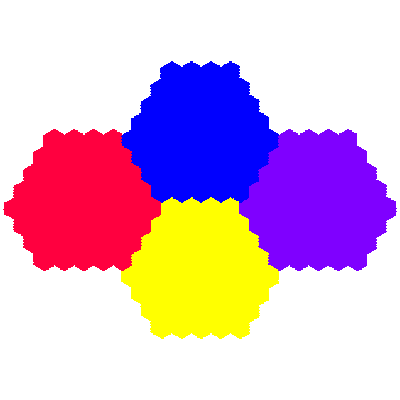
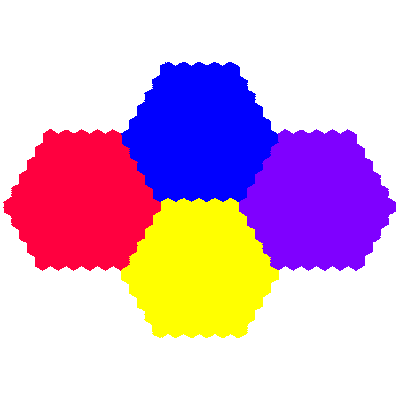
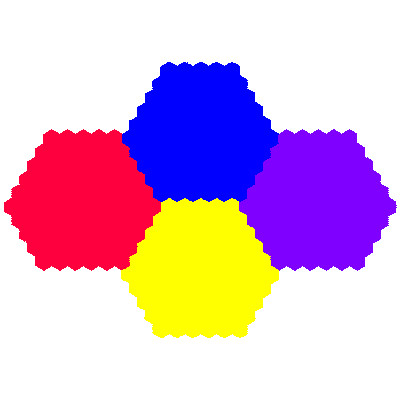
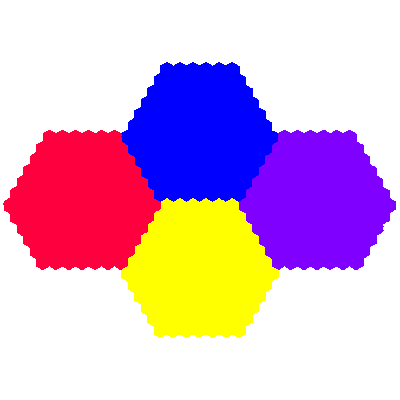
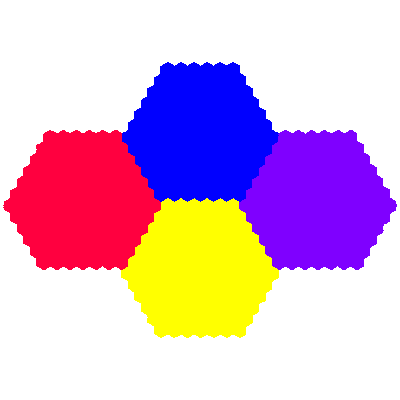
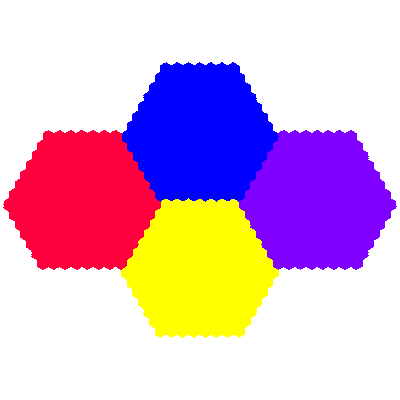
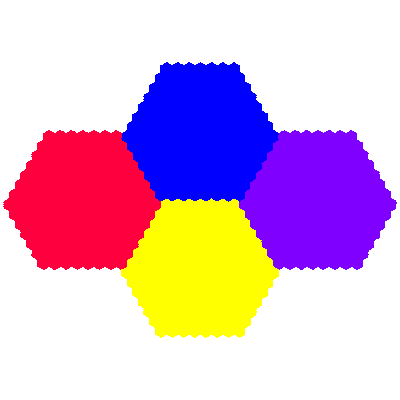
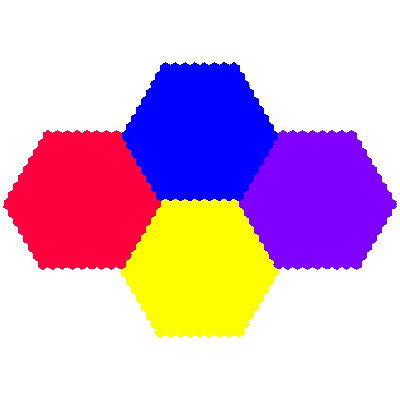
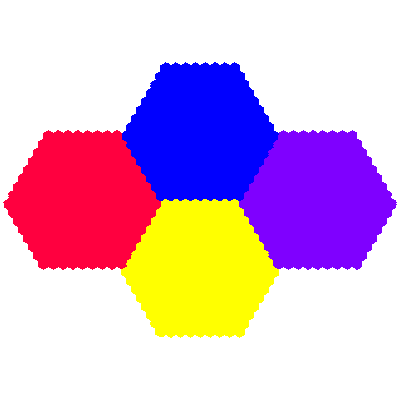
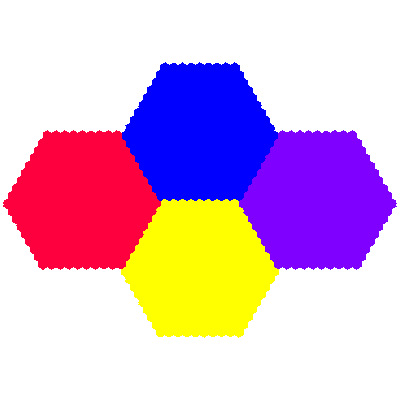
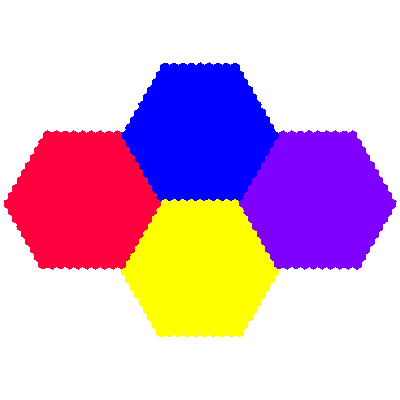
Source:
All are independently discovered, although I have since found copies of the 1st order cis- and trans-fudgeflakes on the web.
The fudgeflake can be traced back to C. Davis & D. Knuth, Number representations and dragon curves. J. of Recreational Mathematics 3: 66–81 & 133–149 (1970), many years before I found it on a systematic investigation of IFSs based on rings of elements. I must have seen it in Benoit Mandelbrot's The Fractal Geometry of Nature several years earlier as well.
References:
© 2000, 2017, 2018 Stewart R. Hinsley